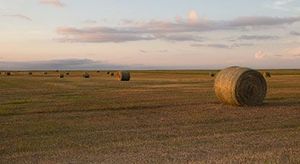Pasture, Rangeland, and Forage Coverage Continues Growth Trend in Federal Crop Insurance Program
 Corn, soybeans and wheat traditionally account for the majority of acres insured by the Federal Crop Insurance Program (FCIP). However, insured forage crop acres continue to grow under the Pasture, Rangeland and Forage (PRF) insurance plan. PRF was designed to help protect a producer’s operation from the risks of forage loss due to the lack of precipitation. Increased participation in this plan accounts for the majority of growth in FCIP-insured acres over the last few years.
Corn, soybeans and wheat traditionally account for the majority of acres insured by the Federal Crop Insurance Program (FCIP). However, insured forage crop acres continue to grow under the Pasture, Rangeland and Forage (PRF) insurance plan. PRF was designed to help protect a producer’s operation from the risks of forage loss due to the lack of precipitation. Increased participation in this plan accounts for the majority of growth in FCIP-insured acres over the last few years.
FCIP-covered acres grew from under 300 million in 2016 to approximately 450 million in 2021. This growth was led by increased forage acreage. Field crops represented 78% of total insured acres in 2016, with forage acres coming in at 16%. By 2021, this shifted to 52% of covered acres consisting of field crops and forage crops representing 40% of insured acres. Specialty crop coverage made up the difference in acreage covered representing 6% in 2016 and 8% in 2021.
The Pasture, Rangeland and Forage plan was initially introduced in 2007 to address differences between traditional crop coverage and forage production. Between 2014 and 2021, about 95% of the insured acreage for forages was covered by the Pasture, Rangeland and Forage plan. Despite the market shifts, the value of the insured forage remains small compared to field crops. In 2021, the insured liabilities for the Pasture, Rangeland and Forage plan were $4.3 billion, which represents 3% of total insured liabilities.
Read more about the growth of the Pasture, Rangeland and forage plan here.
